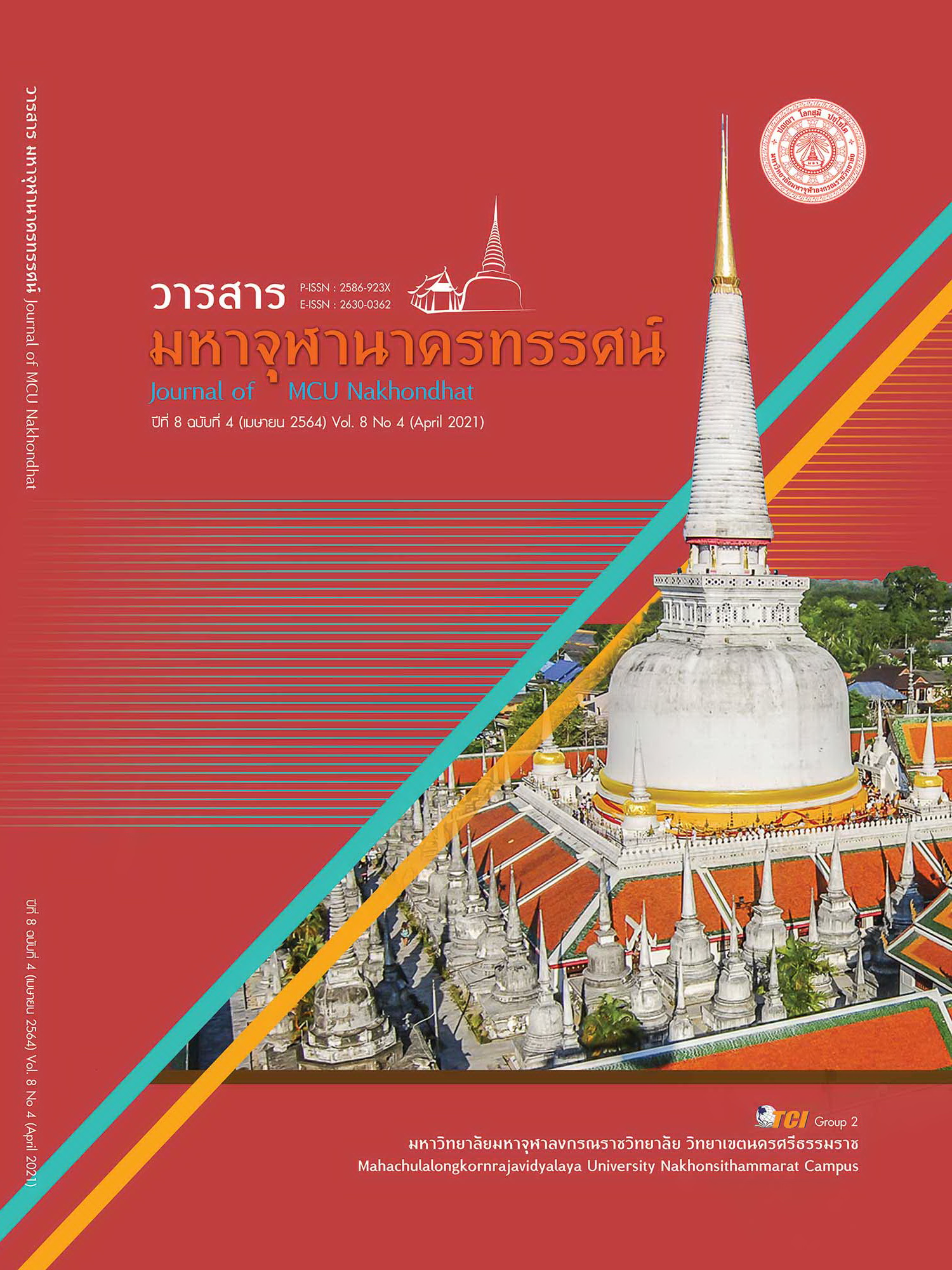E - WORD OF MOUTH AFFECTING E - CORPORATE REPUTATION OF STATE - OWNED BANK
Main Article Content
Abstract
The objective of this research was to investigate the E - word of mouth communication factors affecting the E - corporate reputation of stated - owned banks. This research was quantitative research. The data was collected by distributing 400 sets of questionnaires the stakeholders of those state - owned banks. The statistics used for data analysis included the percentage, frequency, mean, and standard deviation. Moreover, the hypotheses were tested had been evaluated by multiple regression analysis at a significance level of .05. The study of this sample revealed that most the sample were female; age between 20 – 39 years old; single; bachelor’s degree; civil servants and having income more than 55,000 THB per month. The sample had the opinion toward the E word of mouth communication at the medium level while they focused on the E - corporate reputation at the high level. From the study, the hypotheses were shown that 1) the e word of mouth communication factors, including trust, message quality and source credibility, significantly affected on the brand characteristic of e - corporate reputation. 2) the e word of mouth communication factors, including degree of influence, trust and source credibility, significantly affected on the website quality of e - corporate reputation. 3) the e word of mouth communication factors, including degree of influence, trust and source credibility, significantly affected on the service quality of e - corporate reputation. 4) the e word of mouth communication factors, including tie strength, degree of influence, trust, message quality and source credibility, significantly affected on the social media of e - corporate reputation.
Article Details
References
Castellano, S. & Dutot, V. (2017). Investigating the influence of e - word - of - mouth on e - reputation. International Studies of Management & Organization, 47(1), 42-60.
Chu, S. & Kim, Y. (2011). Determinants of Consumer Engagement in Electronic Word - Of - Mouth (E - WOM) in Social Networking Sites. International Journal of Advertising, 30(1), 47-75.
Deephouse, D. L. (2000). Media reputation as a strategic resource: An integration of mass communication and resource - based theories. Journal of management, 26(6), 1091-1112.
Fombrun, C. (2012). Corporate reputation: Definitions, antecedents, consequences. Oxford, UK: Oxford University Press.
Gaines - Ross, L. (2008). Corporate reputation: 12 steps to safeguarding and recovering reputation. Hoboken: John Wiley & Sons.
Gotsi, M. & Wilson, A. . (2001). Corporate reputation management:“living the brand”. Management Decision, 39(2), 99-104.
Goyette, I. et al. (2010). E - WOM Scale: Word - Of - Mouth Measurement Scale for Service Context. Canadian Journal of Administrative Sciences, 27(1), 5-23.
Kumar, S. (1999). Valuing corporate reputation. In Reputation management: Strategies for protecting companiestheir brands and their directors. London: Kogan Page.
Lee, M. & Youn, S. (2009). Electronic Word of Mouth (E - WOM): How E - WOM Platforms Influence Consumer Product Judgement. International Journal of Advertising, 28(3),473-499.
Sherman, M. L. (1999). Making the most of your reputation. Reputation management: Strategies for protecting companiesheir brands, and their directors. london: Kogan Page.
Zikmund, W. G. et al. (2013). Business Research Methods. Mason, Ohio: South - Western.


